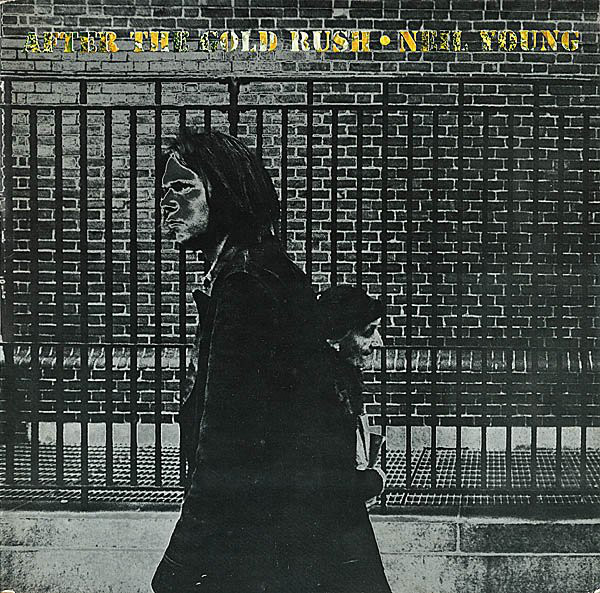I’ve made A LOT of changes to my system over the past year and every one of those changes has made it easier for me to hear the relative strengths and weaknesses of the records in my collection. Where I once was struggling to notice subtle differences between various pressings, now I can suss them out pretty fast.
Not long ago I posted an article on power cords in which I highlighted how changing my power cords helped improve the tonality and naturalness in the sound of my system. I can’t tell you what a pleasure it is to play a record now and hear how sweet and present the music can sound on a well mastered, well pressed copy.
An interesting side effect of this benefit has been that instruments and vocals that are NOT tonally correct now stick out like a SORE THUMB. Usually these flaws are the fault of the mastering or the pressing, but not always. Sometimes flaws, tonal or otherwise, can be fixed by changing the arm height and optimizing VTA.
Yesterday I put on a copy of Neil Young’s After The Gold Rush I’d picked up a few weeks ago and one that’s claimed a place in my top 10 BEST sounding records. After unplugging my internet and switching off the breakers to my kitchen and laundry, the soundstage on this record opened up so beautifully and Neil’s vocals were so clear and present I almost had to pinch myself that this was MY STEREO playing back this wonderful record!
The bass on Gold Rush is BIG, and yesterday I was noticing that, at times, it was just a tad boomy with a tendency to plump up the midrange, causing it to loose some sharpness and clarity. So I raised the arm height slightly and that was enough to tighten up the bass and bring the midrange more clearly into focus.
Next I played another top 10 sounding record from my collection – an RCA recording that includes Strauss’s Burleske with pianist Byron Janis backed by The Chicago Symphony and conducted by Fritz Reiner. The performances and the recording quality on this 1965 Victrola pressing are nothing short of astonishing, and the record is sheer joy to listen to. It’s also a complex recording with a sumptuous blend of strings, horns and percussion around Janis’s glorious work on the piano and one that, if VTA isn’t just right, can easily fail to reach its full potential.
Yesterday I noticed some harshness in the horns and a slight lack of string texture. I could also hear that percussion instruments were not as crisp and weighty as I thought they could be. I lowered the arm height from what I’d had it at for …Gold Rush and Viola! The horns lost their harshness, the strings fleshed out and the percussion came to life, as did the recording and the performances!
Finally I pulled out two copies of The Band’s debut, Music From Big Pink. I hadn’t played my 70’s reissue for a while and was interested to hear how it stood up against an early 80’s reissue I’d just acquired.
The 80’s reissue was showing some real promise when the song “In A Station” came on and the clavinet, not an easy instrument to reproduce well, showed a harsh brightness that I found jarring. Once again I lowered the arm a little and managed to improve the resolution, removing the harshness. This in turn opened up the soundstage and revealed more space around the instruments and performers, liberating the vocal parts.
In each of the above cases the arm height adjustments were relatively small, but the effect was substantial. How substantial a difference a relatively small VTA adjustment makes will vary from system to system. My system is pretty sensitive, but not all systems are and I’d encourage you to consider this should you find yourself scratching your head over whether raising or lowering your tonearm is having ANY audible effect on the sound.
And while the quality and qualities of a your system are extremely important for adjusting VTA, perhaps the MOST important factor in really dialing in the VTA, or for that matter any system adjustment, is your EAR. You need to be VERY ENGAGED in the music. You need to tune in to the performances of each and every record you play. You need to be in THE ZONE! And when you can get into the zone you will hear things that don’t even register during casual listening.
The zone is where you start to hear more than just the little details that most audiophiles focus on and begin to take in the ENTIRE performance. It’s where you hear not just the individual performers but each performer in relation to the others. The zone is where you hear the sound of those performers playing in the studio or hall in which they’re performing. And the zone is where you hear and appreciate the qualities of the sound that the producers and engineers were seeking for that particular album when the recording was made.
When you can begin take it ALL in as a collective whole, that’s then you will begin to UNDERSTAND the music, and that’s when you will begin to know JUST what the music should sound like. THEN you will be able to adjust your VTA in JUST the right way – that is, in the way that brings the recordings and the performances to life more palatably and convincingly that you ever thought possible.
